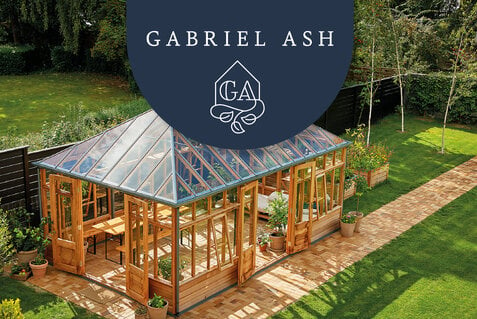Written by Spirekassen March 2024
Guide: Cucumbers in the greenhouse
Over the coming months, we’ll teach you everything you need to know about growing cucumbers in your greenhouse. Follow along, and you’ll be able to cultivate them without major difficulties. In fact, there are only a few key things to learn—once you know them, you can easily avoid the “classic challenges” of cucumber cultivation.

If you own a greenhouse, there’s a good chance you’ve already tried growing cucumbers. For some, it’s a success right from the start. For others, things go wrong, and it’s easy to lose confidence. You are NOT alone—growing cucumbers isn’t always simple.
Compared to tomatoes, cucumbers are more sensitive and place higher demands. Generally speaking, they require more in terms of climate, pre-cultivation, and greenhouse environment. In addition, they need a high-quality potting mix with lots of air.
March
It’s now officially spring. The days are getting longer, and you can feel it. Since the winter solstice in December, daylight has increased by a full five hours by the 21st of March. In the past, March was mostly a month for melting snow. Nowadays, with climate change, we often experience mild and dry weather, which tempts many to start sowing early. Still, our best advice is to wait before sowing cucumber seeds. Instead, spend March learning which type of cucumber you want to grow—because not all cucumbers are the same.
Different types of cucumbers
Cucumber (Cucumis) is a genus with around 50 species. The cucumber we know (Cucumis sativus) is just one of them. It’s closely related to melons, which you’ll notice because they have nearly identical growing requirements—both love the warmest spot in the greenhouse.
Cucumbers have been cultivated for over 3,000 years and originally come from India. That tropical heritage explains their love of heat. It’s believed that cucumbers were introduced to Europe by the Greeks or Romans. And understanding the wild cucumber’s origin helps us grow better today. Wild cucumbers are very different from modern varieties. The original fruit was round, covered in large spines, and had a bitter taste. Modern F1 hybrids have been bred to reduce bitterness and spines, but some varieties may still develop a slight bitterness if left on the plant for too long. Choosing F1 seeds helps avoid this issue.
So in March, take time to decide what type of cucumber you want to grow and what you’ll use it for.
Types of cucumber
- Gherkins
- Pickling cucumbers
- Jungle cucumbers
- Lemon cucumbers
- Slicing cucumbers
- Snack cucumbers
Choosing the right type for the right use
At Spirekassen, we often find that customers don’t know the difference between cucumber types. That’s why people sometimes end up growing the wrong type for their intended use. Here’s a simple guide to what to grow—and why.
Gherkins and pickling cucumbers
These types aren’t very heat-demanding and grow best outdoors rather than in a greenhouse. Their leaves are coarse, sometimes prickly, and the fruits also have a slightly rougher surface and several varieties still have a hint of spines, like the wild cucumber. If the fruits grow too large on the plant, they develop a bitter flavour. Even if they turn slightly bitter when overripe, they’re ideal for pickling.
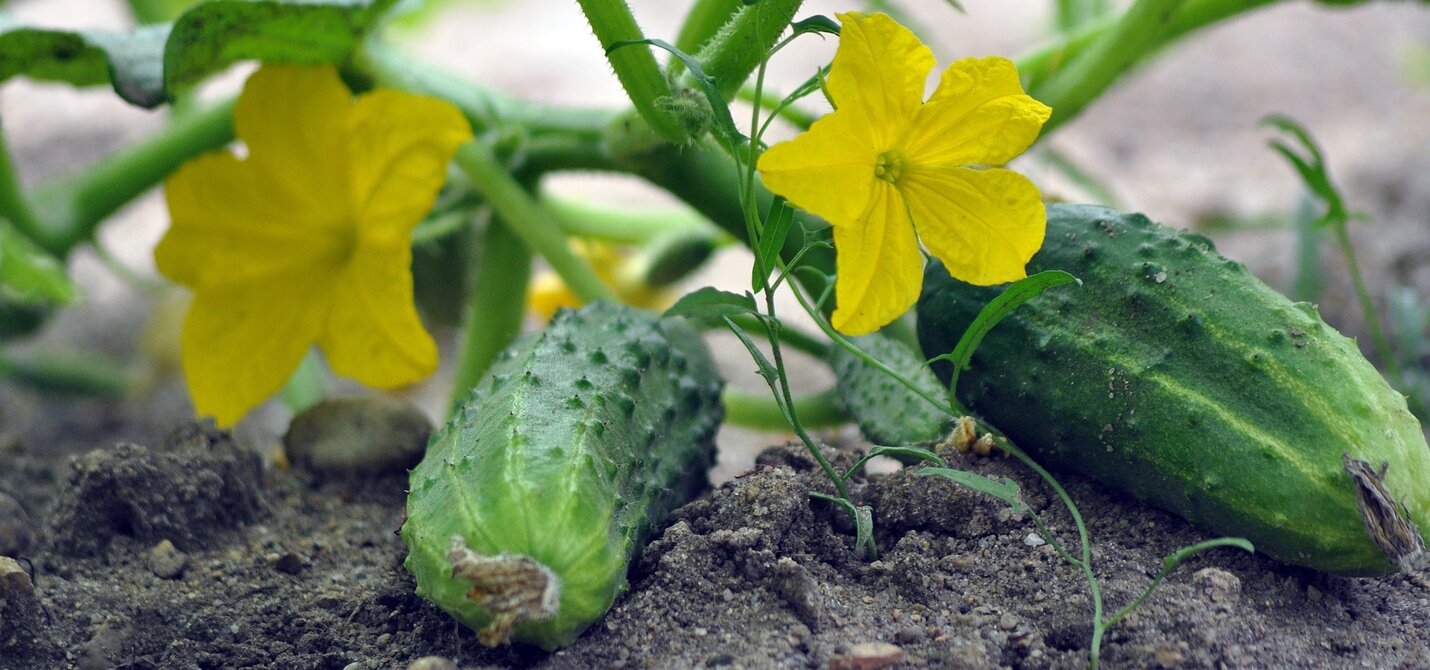
Lemon cucumber
A round, yellow cucumber with a tangy flavour. It’s versatile—good fresh, pickled, or fermented. It may be suitable for both outdoor and greenhouse cultivation, though we haven’t tested this ourselves.
Jungle cucumber
The jungle cucumber is mostly a nickname, because it's not a cucumber at all. The Latin name Melothria scabra reveals that it does not belong to the Cucumis genus. It goes by names such as "Mexican miniature watermelon", ”Mexican sour cucumber” or "Mexican sour gherkin".
Jungle cucumbers are funny because they look like mini watermelons and tastes like cucumbers. They are primarily used for pickling, but some people also eat it fresh in salads. However, you'll be surprised when you eat it fresh because the skin is thick and slightly chewy. Jungle cucumbers thrive in the warmth of the greenhouse, where they have a climbing and fast growth.
Slicing cucumbers and snack cucumbers
Known collectively as “salad cucumbers,” these are the ones you eat raw. Snack cucumbers are short and plump—great for lunchboxes—while slicing cucumbers are the long, classic type, we know from the supermarket. They need the warmth of a greenhouse to thrive and must be supported as they grow.
Note: This article focuses on cucumbers suitable for greenhouse cultivation.
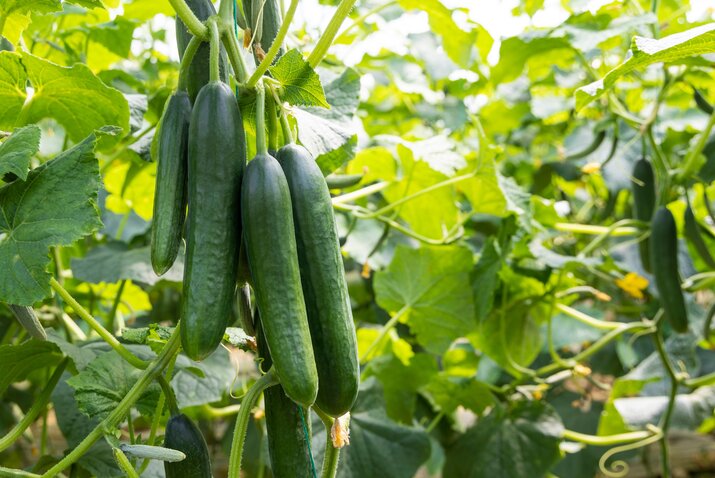
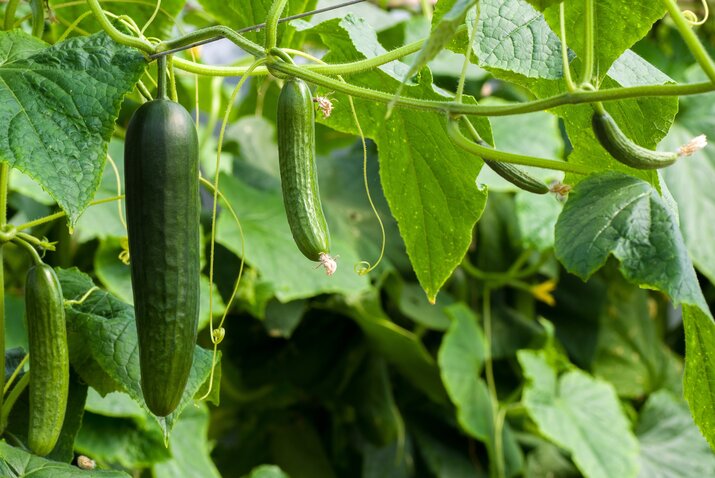
Top tips for March
- Choose the right type of cucumber.
- Learn about the climate they need.
- Wait until April to sow.
April
April is one of the busiest months of the gardening year. We can feel spring in the air, and the sun begins to show its strength. An old Danish name for April is the Grass Month and it makes perfect sense: in April, the grass wakes up from winter dormancy and starts to grow again.
There’s a saying that April is unpredictable. Some days feel like summer, and it’s tempting to sow or move small plants into the greenhouse. But resist the urge!
You can still expect night frosts in April—and even the occasional snow. Transplanting pre-sown cucumber plants might work, but it won’t necessarily make them grow faster. A rough start outdoors can stunt a plant for the rest of the season.
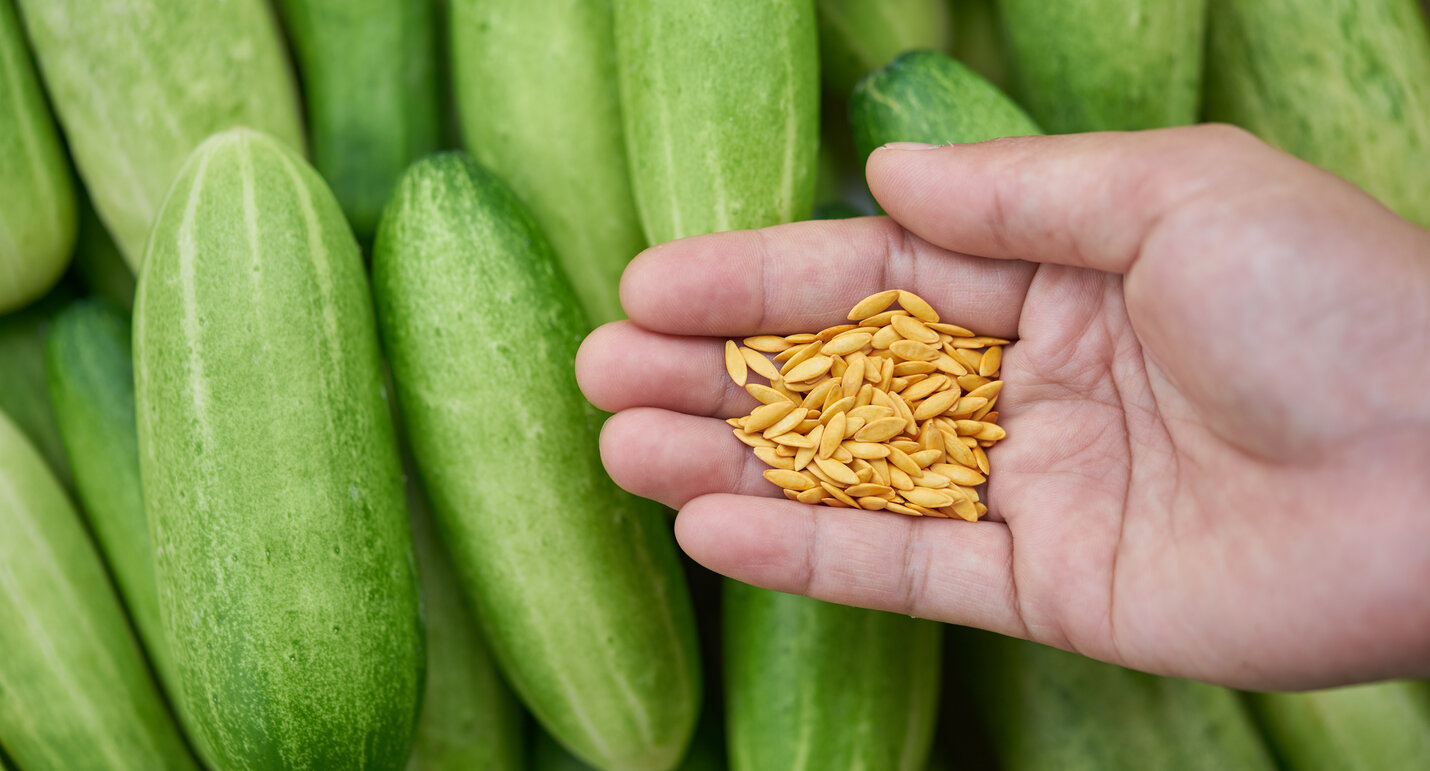
Getting ready for pre-germination – Equipment and More
Now is the time to prepare for sowing cucumbers for the greenhouse. You’ve already selected the right seeds—maybe one snack variety and one long slicing variety. Normally we recommend using large seed trays with good soil volume, but cucumbers are an exception.
Cucumbers are delicate plants with sensitive root systems and vulnerable root collars, which are prone to infection. If you can avoid transplanting the seedlings later, it’s worth it. That’s why we recommend sowing directly into a 12 cm pot. The cucumber seed is large, and with proper sowing depth and temperature, it will usually germinate within 7 days.
Always sow your seeds in seed and prickly soil. This is a gentle, low-nutrient soil that’s fine-textured and airy—ideal for young, sprouting plants. Cucumbers especially prefer a very light and loose soil. To make it even better, mix in some perlite. Perlite is a volcanic material that “pops” like popcorn when heated. It makes the soil extra light and airy—just the way cucumber roots like it. You can also buy seed and prickly soil that contains perlite.
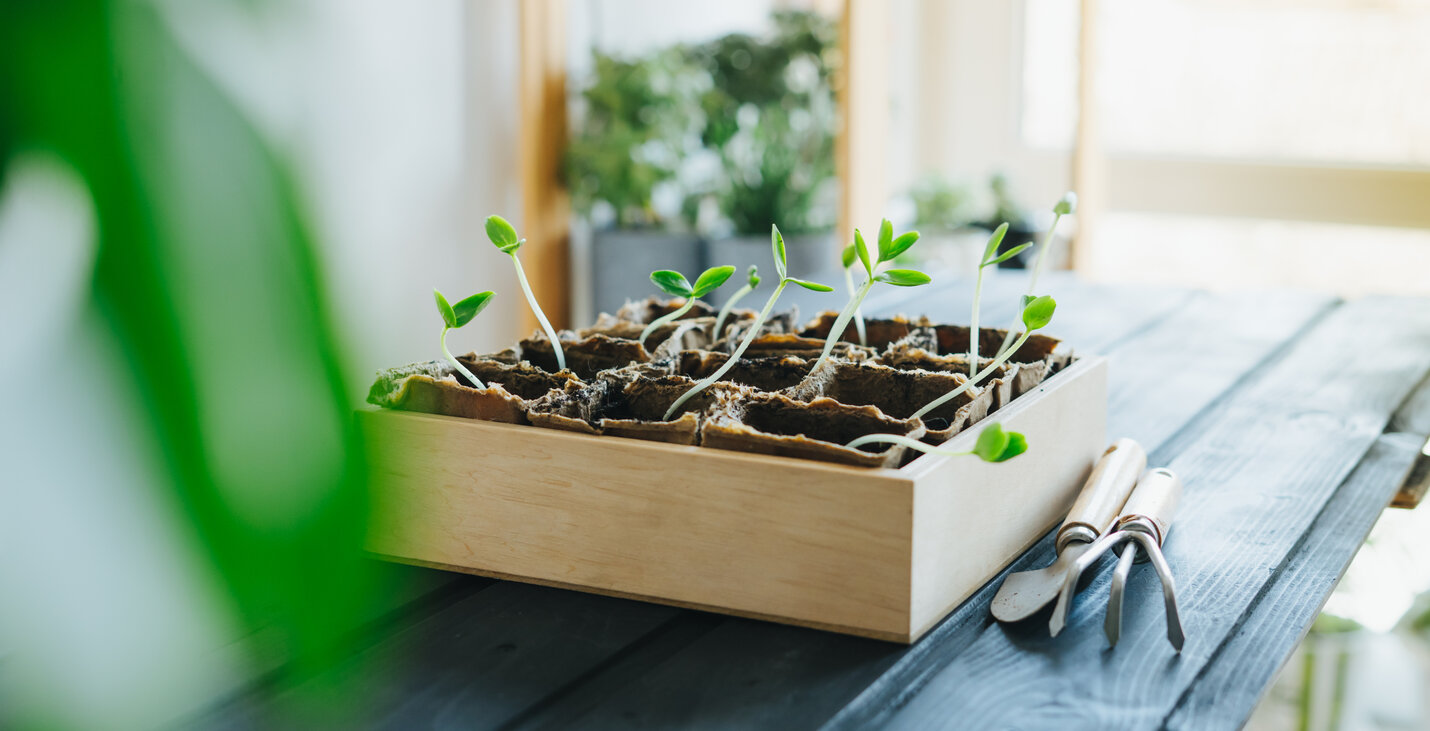
Sowing and placement
You're right on time if you're behind schedule with pre-germination. Mid-April is the perfect time for pre-germination of cucumbers.
Moisten the soil and make a small hole for the seed. The seed should be covered with no more than 2–3 times its own thickness in soil. A cucumber seed is about 3 mm thick, so plant it approximately 0.5 cm deep. Sow the seed vertically rather than flat—this helps prevent rot, especially if you're prone to overwatering.
A good rule of thumb: sow 3–4 weeks before you plan to transplant. Once the cucumber seed has germinated, the plant grows rapidly. Within a few weeks, it will dominate your windowsill. Keep the temperature between 22–24°C during germination. Once it sprouts, give it as much light as possible.
Place the pots in the window with most sunlight - and place them as close to the window as you can. We often see people place their seedlings 30–40 cm away from the glass, thinking that’s okay—but it’s far too dark. The plants quickly become weak and leggy and often snap.
Top tips for April:
- Start pre-gertimination in mid-April for best timing.
- Skip the seed tray and sow directly into a 12 cm pot.
- Always sow your seeds in seed and prickly soil and add perlite.
- Avoid compost-based soil.
- Place your pots right by the window for maximum light.
May
In recent years, we’ve learned that May doesn’t always live up to its reputation. It can be cold and rainy—but also warm and sunny, with temperatures hitting 20°C. One of the biggest mistakes you can make this month is assuming May will be mild. It’s wise to keep an eye on the weather forecast. Nights can still be cold, especially around the full moon.
Clear nights mean more heat loss from the greenhouse, which can lead to chilly temperatures. If you’ve already planted out cucumbers, consider covering them with a layer of garden fleece on cold, clear nights.
Greenhouse climate
It’s easy to be fooled. Garden centres and supermarkets often tempt you with small, ready-to-plant cucumber seedlings. You may have already seen them for sale back in April. Don’t buy them! Cucumbers do not tolerate temperatures below 15°C at any stage—and especially not while they’re still young.
Plants displayed in supermarket entrances are often climate-stressed and not worth the money.
If you buy ready-made plants or are tempted to transplant your own too early, when nights are still cold, your cucumbers may stop growing—or even die. To be on the safe side, we recommend waiting until June to plant out cucumbers in the greenhouse. However, because of climate change, you might be able to plant a little earlier if the weather is stable—but check the forecast and ensure mild conditions for at least a week ahead. Pay particular attention to night temperatures. You may want to invest in a thermometer, which shows the highest and lowest temperatures in your greenhouse across a 24-hour period. This gives you a better understanding of your local microclimate.
Temperature and placement in the greenhouse
Cucumbers grow fastest at 28–30°C, but they yield the most fruit when daytime temperatures are around 20–22°C and nights are 18–19°C. These conditions tend to appear naturally by the end of May or early June. However, soil temperature should not drop below 15°C, or growth will stop completely.
Since cucumbers love warmth, you can place them where tomatoes might not thrive—the warmest, sunniest corner of your greenhouse.
Stem rot
Cucumbers are highly susceptible to stem rot, a fungal infection that affects the base of the stem just above the roots. It’s caused by Fusarium oxysporum, a fungus that survives in the soil over winter.
Planting out too early is the leading cause of stem rot. The base of the stem (the “root collar”) becomes too cold and too wet. In April and May, there are several risk factors: major temperature fluctuations, low pH (often from exclusive use of rainwater), excessive or overly concentrated fertiliser, and—most importantly—planting too deep.
Many gardeners are used to planting tomatoes deeply, especially if they’ve grown too tall during pre-germination. Do not do this with cucumbers.The root collar must always be kept dry, exposed and free of soil. Using high-quality soil or grow bags helps prevent problems. Good soil is airy and drains well, which helps keep the root collar dry. If you use drip irrigation, be careful not to place the drippers directly near the root collar—always aim to keep it dry.
Top tips for May:
- Buy a min/max thermometer.
- Never buy cucumber plants from supermarkets.
- Plant out late May or early June.
- Only plant during a mild period.
- Place cucumbers in the warmest spot in the greenhouse.
- Cover the plants with a layer of garden fleece on cold, clear nights.
- Never plant cucumber deep in the soil.
- Always keep the root collar free, warm and dry.
June
June marks the official beginning of summer. Warm days on the terrace and long evenings in the greenhouse make it a special time of year. Now is the ideal time to transplant cucumbers into your greenhouse. Inside the greenhouse, everything is growing rapidly—tomatoes, peppers, chillies, and cucumbers are all racing ahead. But while tomatoes are generally easy to grow, cucumbers can be far more sensitive. They are more vulnerable to both diseases and pests.
Diseases and pests
The most common disease affecting cucumbers is powdery mildew, a fungal infection. It appears as if the leaves have been dusted with flour. The leaves eventually turn yellow and wilt. Powdery mildew can only survive on living plant material and is therefore called an “obligate parasite.”
You can reduce the growth of this fungus by keeping the humidity in the greenhouse high. It's also possible to buy mildew-resistant cucumber varieties. These don’t completely eliminate the problem, but they do help significantly.
The main pest to watch out for is the spider mite. While they can attack many plants, spider mites absolutely love cucumbers. These tiny pests suck out the contents of the leaf cells and reproduce incredibly fast. You’ll notice the damage as yellow-brown discolouration on leaves and shoots. Eventually, leaves become pale or silvery. Spider mites always live on the underside of the leaves. The name “spider mite” comes from the fine webbing they spin, which allows them to move easily from leaf to leaf—and plant to plant.
Later generations of spider mites may overwinter in the greenhouse and return the following year. They’re small, stubborn creatures. Years of treating them with pesticides have made them resistant to many chemicals.
All insects love dry conditions—so the solution is to do the opposite: fight spider mites with water! Use a spray bottle to give your plants a thorough misting on the underside of the leaves, where the mites hide. Do this with clean water, and make it a habit each time you visit the greenhouse.
You can also buy beneficial insects online to help control spider mites. Some organic plant nurseries even include them in their greenhouse production, so you might be lucky and receive a plant that already contains some natural pest control.
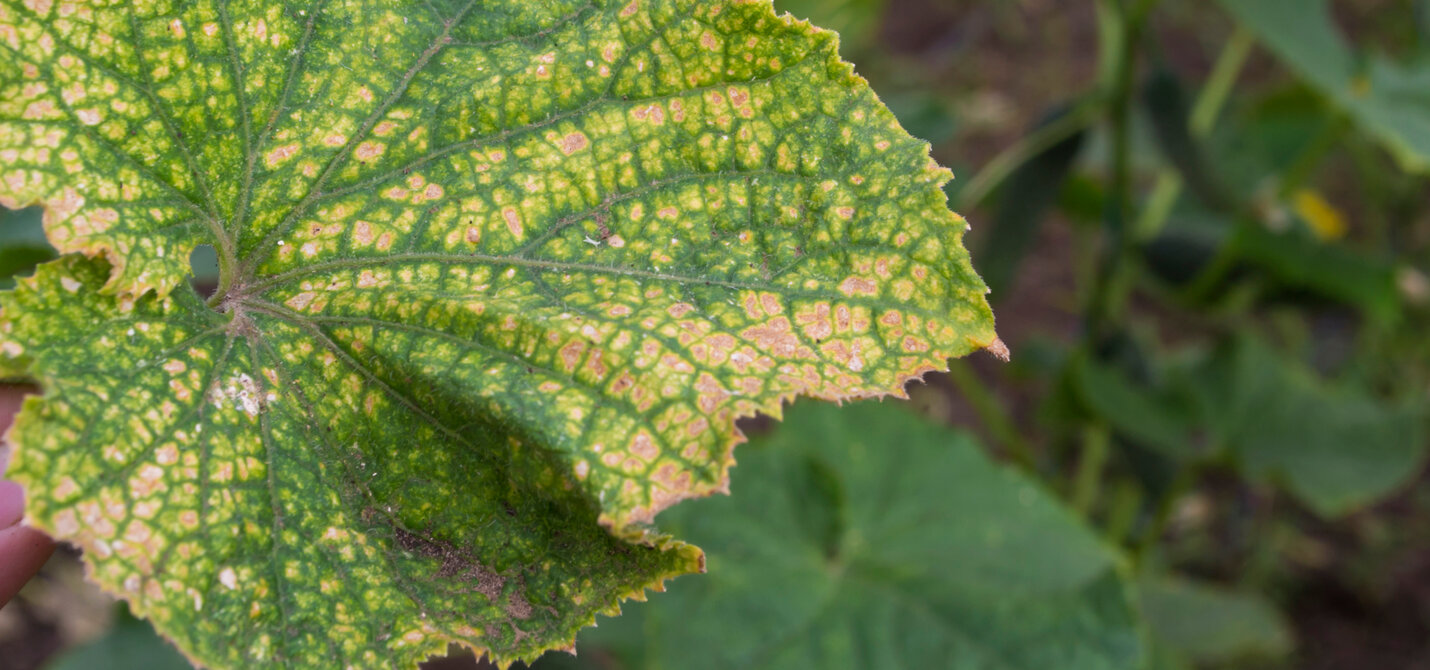
Pruning cucumbers
If this is your first time growing cucumbers in a greenhouse, prepare to be surprised—the plant’s vigorous climbing habit is unlike anything else. Once your cucumber plant settles in, it will explode with growth. You’ll need to manage this balance between growth and fruit production. If the plant sets too many fruits at once, it will shift all its energy into those and stop growing.
Some cucumber varieties produce both male and female flowers. Remove male flowers as soon as you spot them. Female flowers are easy to recognise—they already have a tiny cucumber behind the blossom. Keep those. Many modern F1 hybrids produce only female flowers, which makes things much easier: nothing to remove.
First Fruits and Pruning
The first fruits usually appear on the main stem. As tempting as it is to let them grow, you should remove them. A popular pruning method is to remove all flowers on the main stem and allow every second side shoot to grow, trimming it back after the second pair of leaves. When the main stem reaches about 2 metres in height, cut off the top. This will encourage the plant to produce more side shoots. These side shoots will in turn grow more shoots, and soon it will all become a tangle—but this method leads to a generous cucumber harvest.
Like tomatoes, cucumbers need support in the greenhouse. By midsummer, it’s also time to remove all leaves and shoots from the bottom 50 cm of the plant (closest to the soil). This helps improve airflow throughout the greenhouse.
July
It’s summer—and for many, that means summer holidays. July marks the arrival of the so-called “dog days”, running from 23 July to 23 August. These are typically the hottest days of the year in the Northern Hemisphere and signal the beginning of harvest season. It’s also the peak time for enjoying the many gifts of the greenhouse—especially cucumbers.
Cucumber care
Once the cucumber’s root system is well established in its final spot, growth really takes off. We’ve previously talked about pruning, and this should continue throughout July. It’s also important to support your cucumber plants properly. Use jute or hemp twine for tying them up in the greenhouse. If the string is too thin, double or triple it for strength.
DIY - How to tie up your plants
- Tie a loose loop around the main stem, two leaf pairs up, so you don’t risk damaging the root collar.
- Make sure the loop is loose—the stem will thicken as it grows.
- Gently wrap the string around the plant in clockwise spirals.
- Then tie the other end to the top of your greenhouse.
Remember: the stem gets thicker over time, so don’t tie it too tightly. And always spiral your plant around the support clockwise—because in the Northern Hemisphere, that’s the natural direction plants twine. In the Southern Hemisphere, it’s the opposite! Make sure the support is strong: a fully grown cucumber can get quite heavy!
Even though cucumbers love warmth, it's important to ventilate your greenhouse around the clock in July. This reduces humidity and helps prevent rot at the base of the stem. Open windows also help lower the temperature on hot summer days—and make the greenhouse more inviting for pollinating insects.
Watering and fertilising
Cucumber plants have huge leaf mass, and evaporation is high. That’s why they need a lot of water—especially if you're not using a self-watering container. Water them daily in July.
Growth is at its peak, so now’s also the time for regular fertilisation. Which type you use is a matter of preference, but we recommend pellet fertiliser if you’re growing in soil beds. You’ll find both organic and inorganic options on the market. As a general rule, inorganic fertilisers are more concentrated.
If you’re using a self-watering container, always fill it with tap water. If you prefer to use rainwater, mix it 50/50 with tap water.
Always follow the dosage instructions on liquid fertilisers. In self-watering systems, never exceed the recommended amount—overdosing can harm the plants.
Note: Plant nutrients and fertiliser are NOT the same! Products labelled nutrients are usually less concentrated, while those marked fertiliser are stronger and longer-lasting.
Top tips in July:
- Always tie up clockwise.
- Ventilate around the clock.
- Use tap water in self-watering boxes.
- Know your fertiliser type well.
August
August is the last month of summer—and fittingly, the name means “harvest month.” While grain traditionally ripens in August, recent years have seen earlier harvests, often beginning in July. In this month there’s still plenty of warmth and light left for growing cucumbers.
Cucumber season – What to do with all that produce?
By now, you're probably harvesting cucumbers almost daily. Maybe you're even struggling to keep up. A single plant can produce quite a lot! Still, many people are unsure how to best store freshly harvested cucumbers. Make sure to pick the fruits before they get too big—overripe cucumbers can develop a bitter taste.
Many people make the mistake of storing cucumbers too cold. Cucumbers are sensitive to temperatures below 7°C. If stored in a refrigerator that’s too cold, they become watery and lose their flavour. The glassy, soft texture ruins the cucumber—and it needs to be thrown out. For the same reason, cucumbers should not be frozen for long-term storage, as the texture is destroyed.
Store your cucumbers in a plastic bag to prevent moisture loss. High evaporation causes the fruit to go limp. If you do keep them in the fridge, make sure the vegetable drawer doesn’t dip below 7°C. If it does, it’s better to keep your cucumbers in a cool spot elsewhere in the kitchen. Another good tip is to share with your neighbours or family.
Cucumbers keep longest if you don’t store them next to tomatoes, apples, pears, or bananas. These fruits release large amounts of ethylene, a natural ripening gas. Cucumbers are extremely sensitive to ethylene. If your freshly harvested cucumbers are exposed to it, they’ll over-ripen in no time.
Ideas for using cucumbers
- Try a classic cucumber sandwich.
- Preserve them as pickles.
- Add cucumber to your slow juice or green smoothie.
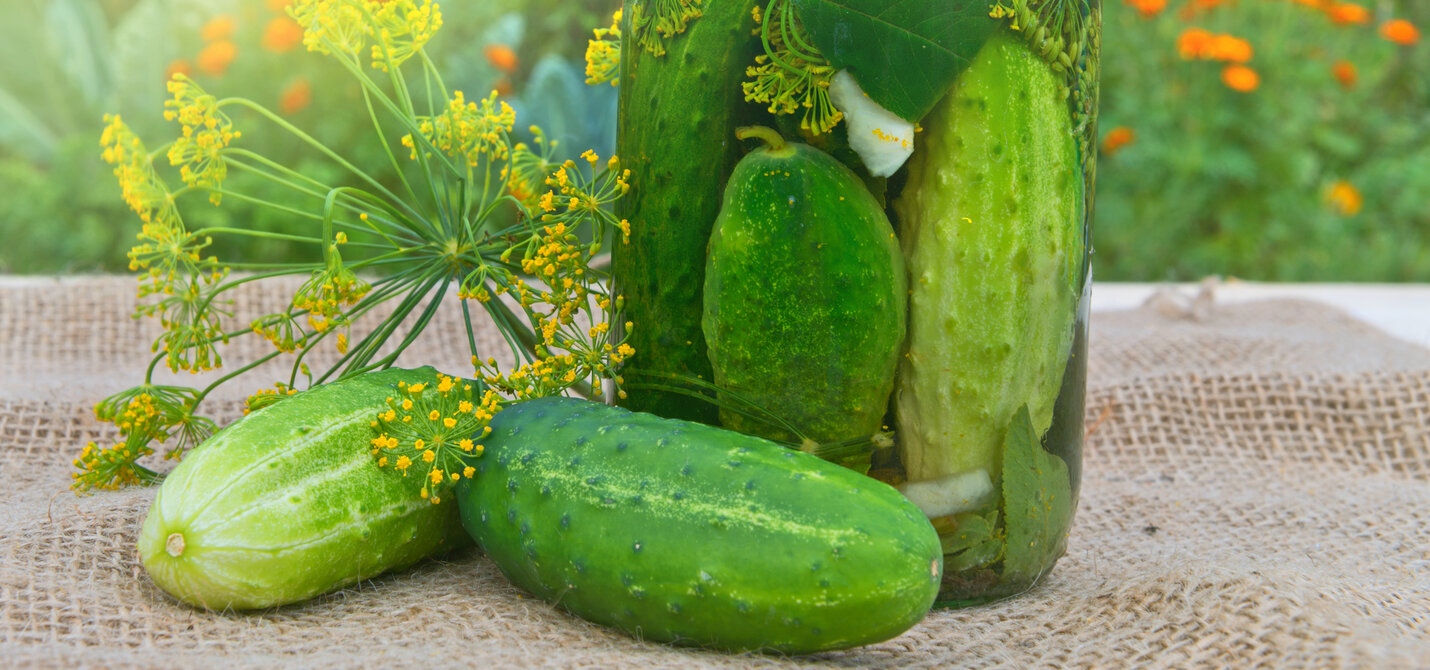
September
Autumn has begun, and it’s almost time to say goodbye to cucumbers for the season.
Climate change has generally made September milder, wetter, and sunnier. Since the summer solstice in June, daylight hours have decreased by five hours.
The cucumber’s growing season is nearing its end.
Harvesting seeds
Many people like the idea of saving cucumber seeds for next year—especially since cucumber seeds tend to be relatively expensive. However, modern cucumbers have been heavily refined over time. Male flowers have been largely bred out of most varieties. The prickles are gone, and the bitterness has also been bred away. Some varieties are even resistant to powdery mildew.
All this is thanks to years of careful plant breeding. Today, most modern cucumber varieties are what’s known as F1 hybrids. With F1 breeding, we’ve intervened in nature’s course to create special characteristics. The process starts by self-pollinating two different parent lines—often for many generations—until they become genetically uniform (a form of inbreeding). These “inbred” lines are then crossed to produce a first-generation hybrid with unique traits.
However, this only works for the first generation—the so-called F1 generation. You’ve probably seen the “F1” label on seed packets, especially for cucumbers.If you save seeds from an F1 plant and sow them the next year, you won’t get the same results. Instead, you’ll see much poorer characteristics that resemble the weaker, inbred parent lines.
That’s why you generally cannot save seeds from modern cucumber varieties.
Cleaning the greenhouse
Before winter arrives, it's important to practise good greenhouse hygiene. Remove all old plants, roots, and especially the root collars of your cucumbers. This helps prevent harmful fungi and bacteria from surviving in leftover plant debris and soil until next growing season.
Top 10 tips for cucumber success:
- Start late—pre-sow in April.
- Choose F1 varieties to avoid bitterness and spines.
- Transplant around 1 June or during a warm time.
- Never plant deep—keep the root collar dry, warm and exposed.
- Mist daily underneath the leaves with water.
- Cut off the top of the plant when it reaches about 2 metres.
- Use proper support for the plant.
- Don’t let the fruits grow too large on the plant.
- Store cucumbers at 7°C, away from apples, pears and bananas.
- Don’t save seeds from F1 plants for next year.

Transform Your Greenhouse Life
Are you looking for fresh inspiration to transform your greenhouse life into a lush paradise? Let's explore new ideas and tips together that will make your green haven even more magical!
JULIANA GROUP
Juliana Group is a leading global supplier of quality residential greenhouses. Founded in 1963 by Mogens A. Stærmose in Odense, Denmark, the family-owned company is today run by third generation, Nikolaj Stærmose. Headquarter and production remains Odense-based with subsidiaries in the UK and Germany and export to more than 20 countries.
’We help people grow’. That is why our brands Halls, Juliana, and Gabriel Ash all set the frame for experiences that are as natural as they are magical. Despite our long history, we’re future-focused and curious on how we can improve the sustainability of our greenhouses. Learn more about Juliana and find inspiration for life in the greenhouse in our inspirational universe.





